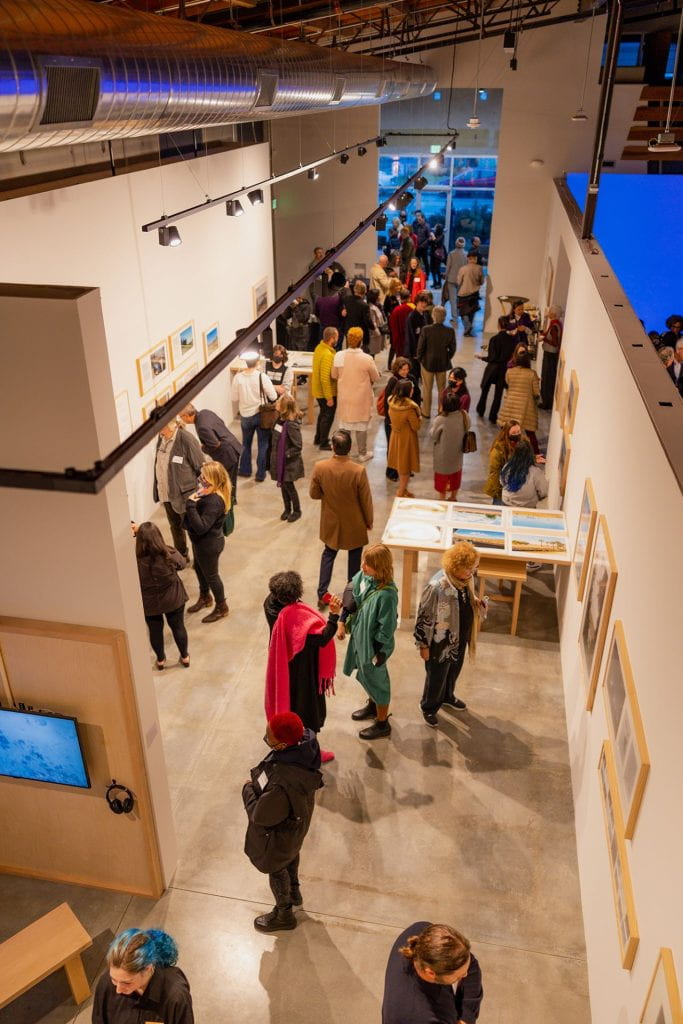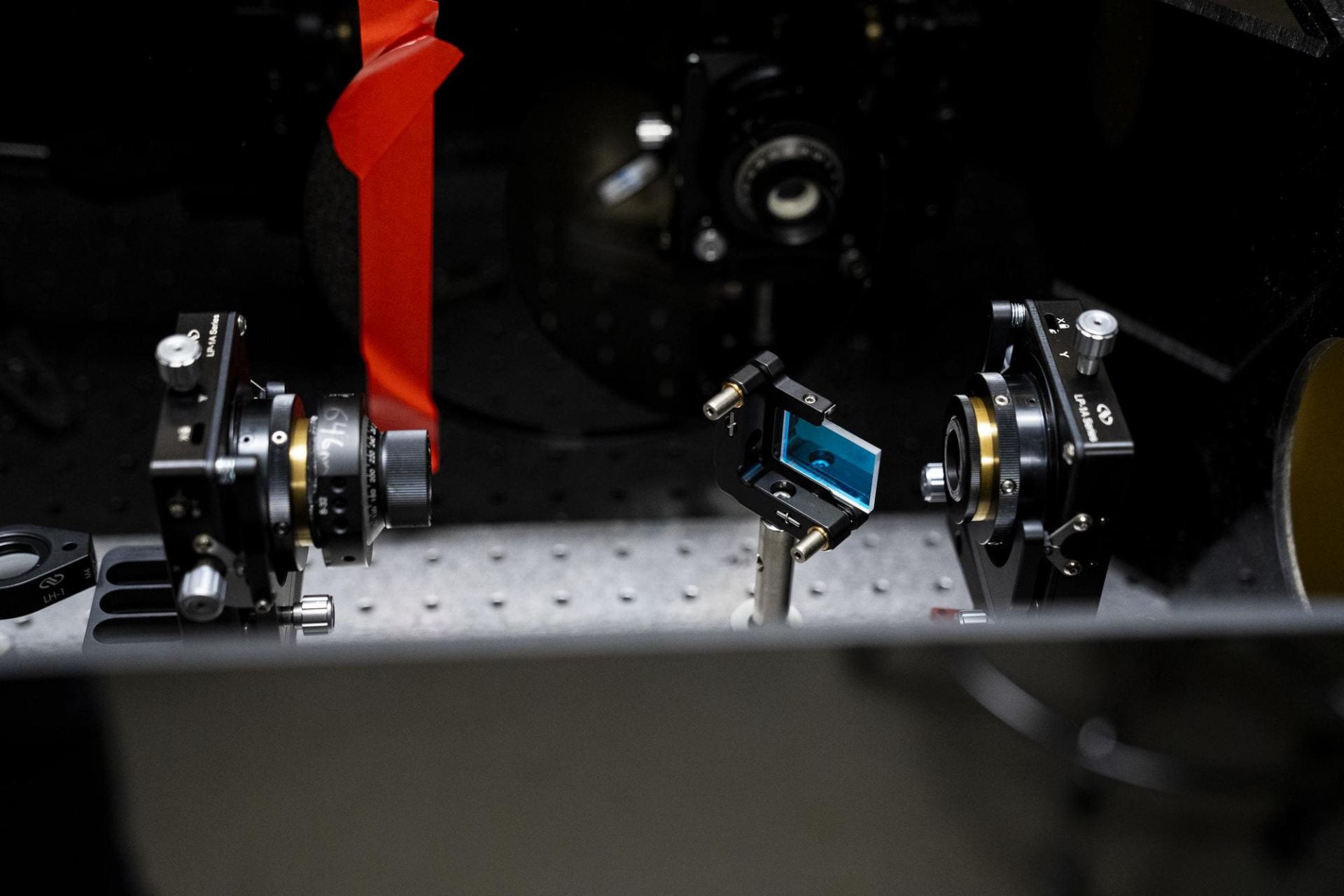
Distinction in Research, Scholarly and Creative Activities
Committee members
Jasmine Alinder, Dean of Humanities and Professor of History, co-chair
Paul Koch, Dean, Physical & Biological Sciences and Distinguished Professor of Ear th and Planetary Sciences, co-chair
Mike Beck, Director of the Center for Coastal Climate Resilience, Institute of Marine Sciences & AXA Chair in Coastal Resilience
Heather Bell, Director, Research Development
Elizabeth Cowell, University Librarian
Zonglin Di, Graduate student representative
Daniel Halpern-DeVries, Undergraduate student representative
Dee Hibbert-Jones, Professor of Ar t (Sculpture / Public Ar t) and Associate Dean of Research for Exhibition and Engagement, Ar ts
Todd Lowe, Professor and Associate Dean for Research, Baskin Engineering
Mark Massoud, Professor, Politics and Legal Studies
Priya Mehta, Associate Vice Chancellor, Development
Jennifer Parker, Professor of Ar t, Founding Director of UCSC OpenLab
Irena Políc, Managing Director, The Humanities Institute
Connie Rockosi, Professor, Astronomy and Astrophysics
Ryan Sharp, Assistant Vice Chancellor, Innovation and Business Engagement
Gina Athena Ulysse, Professor, Feminist Studies, Senate Committee on Research representative
Alexander Wolf, Dean, Baskin Engineering
Staff support
Derek DeMarco, Department Manager, Chemistry and Biochemistry
Committee Charge
We are a campus of extraordinary scholars, scientists, and creators who individually and collectively advance work that matters. By identifying areas of distinction, we can better highlight our discoveries, tell our stories, and plan to extend our reach into new or emerging areas.The committee was tasked with creating opportunities for faculty, staff,and students to discuss how the campus should approach achieving even greater distinction in research, scholarship, and creative activities over the next decade.
can better highlight our discoveries, tellour stories, and plan to extend our reach into new or emerging areas.The committee was tasked with creating opportunities for faculty, staff,and students to discuss how the campus should approach achievingeven greater distinction in research, scholarship, and creative activitiesover the next decade.
The committee considered the following as part of its recommendations:
- Identifying the current cross-cutting themes and areas of research, scholarship, and creative work that distinguish UCSC.
- Determining new or emerging areas of research, scholarship, and creative work that the campus should consider for investment; provide a rationale and indicate how each area would support the UCSC mission.
- Confirming existing barriers to be removed and additional infrastructure needed to support current research strengths and to develop new and emerging areas
- These might include major instrumentation, power stability, library and computational resources, staff, space, and housing.
- Proposing approaches to provide greater internal recognition of faculty contributions in research, scholarship, and creative work, especially in collaborative, interdisciplinary, public-facing, and communityengaged research, with attention to reducing identity/cultural taxation and acknowledging invisible labor.
- Identifying how faculty, students, and researchers can be better supported as they engage the community in research and outreach.
- Providing better support to faculty, students, and researchers throughout the external funding process, from proposal development to implementation.
- multi-campus research collaborations, and our networked campus (main campus, Westside Research Park, Coastal Campus, Scotts Valley Center, Silicon Valley Campus, MBEST, and the Natural Reserve System).
- Finding ways we can better highlight our discoveries and creative work and tell our stories to raise our profile as a distinct and distinguished research university and MSI.
- Proposing mechanisms to conduct larger campus conversations and action plans to ensure an inclusive campus community, recommend clearer pathways to support those experiencing non-inclusive behaviors, and hold each community member accountable to our values in the face of ruptures.
- Improving communication flows at departmental, divisional, and campus levels on the importance of contributions to diversity, equity and inclusion, and inclusive teaching, especially concerning the transparency of their value in the merit review process.
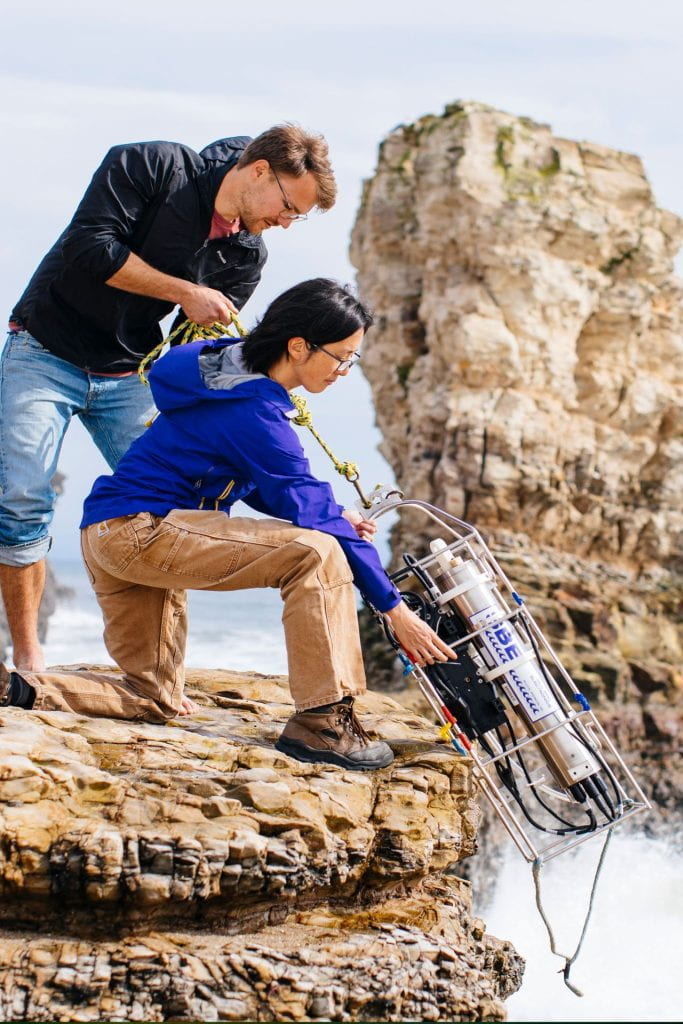
Goals
Goal 1: Establish and develop areas of excellence
Build on our shared values to identify areas of research strength that should be preserved and leveraged, as well as emerging areas for faculty and staff investments.
The campus should identify, cultivate, and support established and emerging areas of research excellence — areas that would lead faculty, students, and staff to choose UCSC for their careers and education and attract funders to invest in our vision. Those areas of excellence should emerge from a deliberative process involving faculty, students, staff, and key outside constituencies. Concrete and credible examples should back the areas identified. Beyond surfacing those strengths, the process should be designed to build broad recognition and support.
Our campus vision is to lead at the intersection of social justice and innovation, including a growing commitment to community-engaged scholarship, embracing our status as a minority-serving institution, and maintaining our long-standing commitment to environmental stewardship and justice and our ability to generate scholarship that shapes and creates new fields of study. That vision, and the research it generated, led to our election in 2019 to the Association of American Universities (AAU, composed of the leading research universities in North America) and the system wide investment in the campus to promote climate resilience. While the charge had bullets requesting that the subcommittee identify areas of strength and emerging themes, we lacked comparative institutional data or the time, staffing, or campus engagement needed to do a deep, inwardly focused assessment. With our shared vision in mind, the campus should try different approaches to evaluate our existing research programs. These approaches would include short-term work to quickly identify broad areas to invest in research growth and longer-term revisions to the external review process that would look at all our research programs, ensuring that we retain the excellence that led to our AAU membership and are also able to support additional areas of excellence. The approaches should also build on ideas in the 2018
Strategic Academic Plan and aspirations that have arisen since that time to formulate a strategy for sustaining and growing our research profile in the next decade.
Metrics
- Provide specific examples of shared strengths and areas of established or potential research excellence.
- Create campus understanding and acceptance of these shared areas, assessed through polling and survey data.
- Conduct polling or surveying to determine if our perceived strengths are recognized as such by key outside constituencies.
- Offer a list of core research areas in which the campus will make strategic investments over the next decade.
- Implement plans for those areas that consider structures for support and coordination; identify leaders, champions, and partners; value strategies to raise the visibility of programs internally and externally; guide allocation of resources; and identify new funding opportunities.
- Execute a revised approach to external reviews of research that takes a more data-driven and externally comparative approach to assess our aspirations, strengths, and weaknesses, and that includes more frequent follow-ups for evaluating progress.
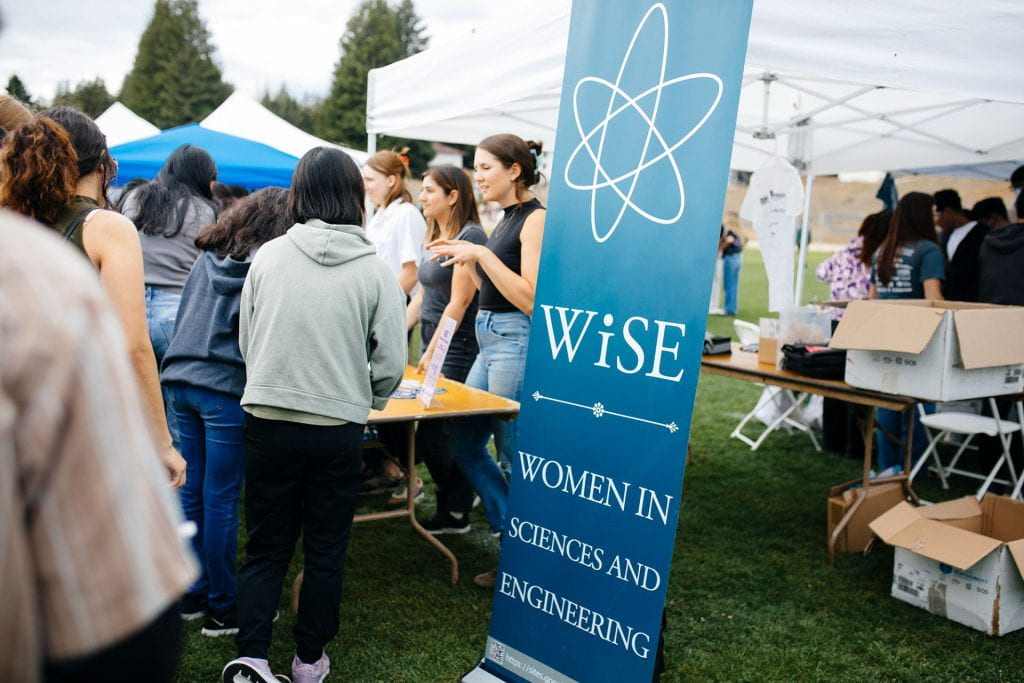
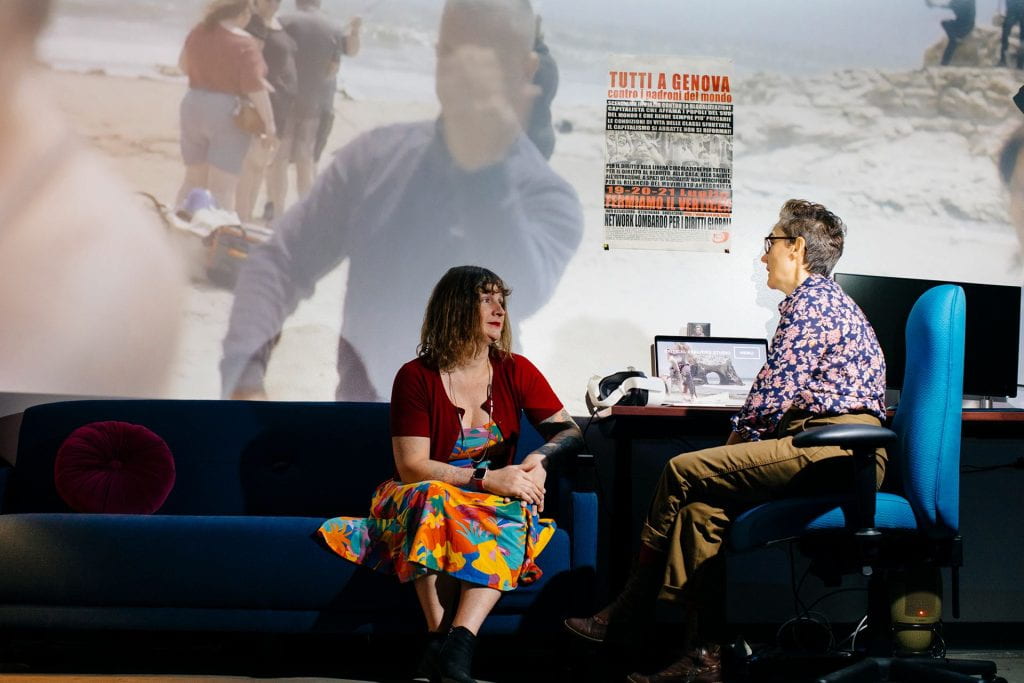
Goal 2: Incentivize extramural funding and interdisciplinary research
Advance our mission, values, and strengths by removing barriers and investing in institutional structures, facilities, staff, and faculty in ways that incentivize extramural funding and bolster interdisciplinary, community-engaged, and center-scale work.
While there have been substantial changes and improvements to our research support system since the Envision process in 2013–14 high-lighted pressing needs, stakeholders reported that significant burdens remain. On the pre-award side, even with more grant writers in the Office of Research and other units, stakeholders still felt under-supported, especially for large, complex proposals. They wanted more streamlined ways to submit proposals and pull together matching support and greater assistance with the mechanics of proposal assembly. Post-award there were many comments about difficulties with procurement, reimbursement, and Institutional Review Board reviews. The struggles impacting research accounting and reporting, especially following the transition to UC Path, were highlighted by STEM faculty. And administrative requirements for research continue to grow in response to federal and state policy. A common refrain from our stakeholder feedback was the erosion of time for research due to the increased demands on faculty/researcher time (more on this below). And stakeholders noted that all these issues were exacerbated when funding and supporting interdisciplinary work.
Our subcommittee and stakeholders identified five ways to address this constellation of issues. Overall, stakeholders felt the campus offers too little staff support for seeking and administering research awards, pushing this work onto administrative staff paid-off grants (if available and allowable) or more often, to faculty, researchers, postdocs, and graduate students. These management issues become more complex when the work crosses department or divisional lines. We need additional staff trained in grant submission and management and staff to assist with the purchasing, hiring, and other expenditures of research funds. In addition, staff retention was viewed as a large issue. Staff move positions within the campus to get an appreciable increase in salary. And salaries are often higher at other UCs, so staff move away after the campus has invested in their training. High internal turnover and staff loss reduce
the effectiveness of our already slim research staff. Staff need clear paths to advance in their positions so they are retained longer, making their motivation to move more related to career aspirations and less to financial considerations.
Streamlining processes and internal policies to increase overall efficiency while effectively-mitigating critical risks to researchers and the university is also essential. While substantial progress has been made in some of the areas identified in the relatively recent National Council of University Research Administrators (NCURA) report, reviewing it for additional points of potential efficiency and staffing recommendations would also be useful. We understand that a review of research accounting and reporting is planned for 2023–24, and it would be ideal if it resulted in shared research budgeting systems and practices that more easily support work that crosses disciplines. Finally, stakeholders believed that our processes needed to increase equitable access to seed funds at multiple levels and across the divisions to help initiate impactful projects and supply bridge funds to sustain graduate student researchers (GSRs)and project scientists during limited gaps in external funding.
Given the minimal support for research at the department level, stakeholders viewed institutes and centers as crucial to meeting our research aspirations, especially in relation to interdisciplinary work. Very few of our institutes and well-established centers fit neatly under the domain of a single department. Institutes and centers differ widely in their structure and resources. But in aggregate, they offer a suite of essential services to the faculty, students,and researchers working in their intellectual domains — research development, support with project management at various scales, specialized facilities, assistance with events, and more.Ideally, institutes and centers would function as more than the sum of their affiliated faculty and researchers. While the system for establishing and reviewing institutes has been formalized,centers have no analogous formal structure. Stakeholders and the subcommittee believe we need guidelines for the establishment, review, and sun setting of centers and that for both institutes and centers, we need clearer models for allocating resources, including director compensation, staff support, space, programming, initiatives, and development.
Many stakeholders focused on approaches to spur inter- and transdisciplinary research and work that is community engaged, both via external funding and through more robust internal systems of support. Many of the structural changes suggested above could have disproportionate impacts on this type of research, for example, through transparent systems to support institutes and centers or more similar research accounting and management practices across divisions. There were more focused suggestions, including hiring staff to be placed with Campus + Community dedicated to facilitating community engagement consistent with best practices and UCSC values, along with seed funding to develop and promote community-engaged research.
Finally, stakeholders noted that the time spent in the classroom at UCSC is higher than atother UCs or comparable R1 universities. With default 5-unit courses (equivalent in contact time to a semester) but annual teaching loads similar to other quarter schools with default 3-or 4-unit classes (where two-semester equivalents of contact are spread over three quarters),over-teaching at UCSC can have a major impact on faculty time. For example, when comparing faculty with an annual three-course load, UCSC faculty will have 20 hours more podium time per year than faculty at UCLA, equivalent to almost an entire additional UCLA course. If UCSCfaculty spend much more time in the classroom than faculty at other R1 universities, theyhave less time for the other work they need to do. Undoubtedly, this structural over-teachingcontributes to the campus having one of the highest student-to-faculty ratios in the system. Itlikely contributes to our struggles with student success. And to the charge of our subcommittee,it could negatively impact research productivity and faculty’s ability to successfully landextramural funding. The campus should strongly consider adjusting its teaching load tomatch other R1 universities in the UC system and beyond.
Metrics
- Investigate how the ratio and composition of research support staff at UCSC compares with that at peer institutions and make targeted investments in staff and track the associated increase in research productivity.
- Follow improvements to processes for submitting and managing grants, both through added staff and new enterprise systems, and deploy systems to monitor the overall work-load and efficiency of these changes with respect to staff and faculty time.
- Address equity issues, better manage Staff and Academic Human Resources to reduce incentives for repeated lateral moves, and track the duration of staff occupancy in critical research support positions.
- Develop a formal system for establishing, reviewing, and sunsetting centers and transparent models for funding institutes and centers.
- Support regular meetings of institute and center directors to share best practices and facilitate engagement. Examples include building on models of existing institutes and centers, working with local venues and organizations, and leveraging off-campus UCSC spaces to host community events and research activities.
- Establish a seed funding process to build and grow collaborations across disciplines and divisions, particularly supporting identified areas of excellence. In addition, implement a central system that makes finding collaborators easier and establishing a bridge funding process to decrease the proportion of GSRs and project scientists who have breaks in support.
- Increase extramural funding in key areas, such as significant awards with multiple principal investigators, interdisciplinary awards of all sizes, community-engaged research projects,graduate training grants, and federal and foundation support for undergraduate student research.
- Consider comparable teaching loads and student-to-faculty ratios (by discipline) to other similar R1s and UCs.
Goal 3: Support the physical research infrastructure
Address the facilities, power, and computational constraints that limit the potential growthof research and creative work, and create and maintain spaces for the exchange of ideas topromote research collaboration.
Concerns about space were raised universally by all stakeholders, both for working and living. It is impossible to discuss the future of the campus and not hear about the housing crisis and how it impacts all members of the campus community. Stakeholders repeatedly cited the need for more functional space to conduct excellent research and creative work. They ques- tioned how we could expand our faculty ranks when office and lab space are already close to capacity. Deferred maintenance was also cited as having an adverse effect on research and the ability to attract and retain excellent faculty. The campus needs to evaluate the current use and condition of existing research and creative spaces, as well as future needs, inclusive of storage. That would include reviewing the accessibility and additional uses of developed land, Westside Research Park, Monterey Bay Education, Science and Technology Center (MBEST), and the Silicon Valley Campus, and options to further leverage partner facilities (e.g., NOAA).
Reliable power and increased computational resources are also critical to productivity, the continued strength of high-profile programs, the growth of emerging areas of excellence, and risk mitigation. Frequent power interruptions were cited repeatedly as highly disruptive to research and costly in terms of lost time, lost samples, and damaged equipment. Both students and faculty noted that broadband coverage could be more consistent across campus, including in areas where research and training activities might be expected to take place, also curbing productivity. Information Technology Services should identify gaps in network coverage and strength and bring all spaces where research and training activities might reasonably occur up to National Telecommunications and Information Administration broadband standards or better. The campus needs increased access to supercomputing capabilities and secure data storage. Finally, higher-speed network connections on- and off-campus are required, especially with greater reliance on colocation and the cloud. Before implementing these changes, we should consider leveraging the Climate Change, Sustainability and Resilience Committee (CCSRC) recommendations to prioritize and plan.
Informal and interdisciplinary interactions are a hallmark of the campus’s founding as a different kind of UC. Stakeholder meetings revealed that faculty want to interact with one another, but that isolation — especially since the pandemic — and the campus’s space challenges have conspired to limit the informal interactions that build research excellence. A solution would be to create spaces (ideally with food) that foster transdisciplinary research exchange, including casual spaces that encourage serendipitous meetups where faculty and students can talk over food. This would also draw faculty to campus areas outside of their offices and labs. These spaces are needed year-round. In addition, there was a desire for more substantial and dedicated conference facilities to hold more events that would emerge from informal collaborations and to hire staff to support events beyond existing research centers.
Metrics
- Produce a research space plan that evaluates our current state and what is needed for the next decade and beyond, with recommendations for renovation/renewal or new facilities at our distributed campus sites.
- Decrease the overall number of power interruptions, particularly to resources at high risk for negative impacts. Seek improvement in coverage, as well as a seamless transfer to auxiliary systems when power is interrupted.
- Increase access to supercomputing capabilities and secure data storage, improving network availability, stability, and speed.
- Align these and other changes with CCSRC recommendations and those in the Decarbonization and Electrification task force report and risk assessments and incorporate them into plans to improve physical research infrastructure.
- Task a Senate Committee analyst (e.g., COR or CFW) with checking each year to ensure that an operating café or other establishment with food and tables is available in every campus area.
- Request that departments and divisions use funds to incentivize faculty to meet with colleagues to encourage collaboration and mentoring.
- Measure progress through central support to divisions and departments specifically earmarked for team teaching within and across departments/divisions. To build research excellence, the call should describe how the team-taught course would contribute to new, collaborative research (including on pedagogy) by the instructors.
- Establish more dedicated and staff-supported facilities on and off the main campus to host larger conferences with breakout areas.
Goal 4: Attract and retain faculty, staff, and students
Increase the successful recruitment and retention of a diverse community of excellent faculty, staff, and students.
Diversity, equity, and inclusion as drivers of research excellence were repeatedly highlighted in stakeholder meetings. Participants noted that while the diversity of the student body and upper administration has grown, representation among Senate faculty needs to catch up. The planned Faculty 100 hires over the next 10 years provide an opportunity to remedy the gap. The campus should support and incentivize the hiring of UC President’s Postdoctoral Fellows. Other recommendations made by the Inclusive and Thriving Campus Community Committee (ITCC) should aid in attracting and retaining diverse talent. Stakeholder feedback also indicated that housing affordability remains a major barrier in attracting and retaining the excellent faculty, staff, postdocs, and students on which the research enterprise depends. Financing and planning to enable the renovation and building of additional housing facilities on UCSC properties will remain critical, as will working with local leaders to advocate for programs and policies that support off-campus access.
Metrics
- Increase UCSC housing units available for staff, faculty, and students.
- Reduce the proportion of UCSC renters who are severely rent-burdened or living in over- crowded housing.
- Decrease the difference between the average starting salary percentile of UCSC and UC campuses with comparable costs of living.
- Expand how well the Senate faculty reflects the diversity of California.
- Track staff retention and advancement by job type, job series, and where they are in the campus organization. Identify who will do the tracking, perhaps a Senate committee analyst or SHR.
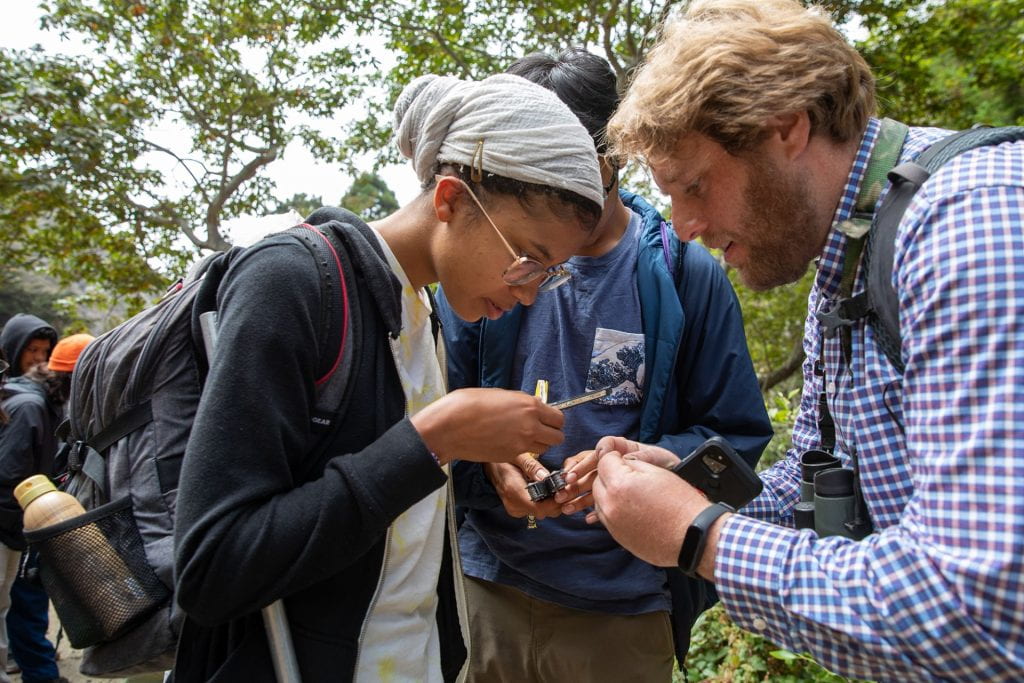
Goal 5: Rethink what counts in merit review and how research is evaluated
UCSC takes a maximal approach to merit review. We should envision a simpler practice. Based on stakeholder feedback, we recommend that the merit review process be rethought, revised, and streamlined. At the same time, we must ensure that faculty are rewarded for new forms of research, risk-taking, and their contributions to DEI.
Aligned with the campus goal of increased efficiency, we should find ways to reduce the time spent on merit reviews. Faculty members, departments, Academic Human Resources, deans, the Committee on Academic Personnel, the Academic Personnel Office, and the Campus Provost and Executive Vice Chancellor’s office spend considerable time crafting and reviewing merit review files. A more efficient and straightforward practice would reduce workload while we maintain transparency and ensure equitable salary increases. Merit reviews should also incentivize risk-taking in research and acknowledge how taxing it is to try to be outstanding in all three areas at every review (as incentivized by our current Special Salary Practice [SSP]). We want researchers who will take their fields in new directions. The current merit review process, however, disincentivizes risk-taking. We should change that to reward strong attempts.
In addition, our campus should build on efforts already underway to acknowledge a broad definition of research, including community-engaged, public, and digital scholarship. With the September 2022 memo from the Committee on Academic Personnel and the Campus Provost and Executive Vice Chancellor, our campus is moving to understand research more capaciously than in the past. However, survey data revealed that there remains the belief that public-facing work is undervalued as research. In addition, a broader consideration of research should take into account scholarly activity that happens at the interaction of research, teaching, and service.
Finally, we need to credit and clarify expectations around contributions to diversity, equity, and inclusion (DEI). Stakeholder feedback revealed that faculty and reviewers need clarification about standards and recognition for DEI contributions to research and other categories. For faculty engaging in invisible labor, which is often DEI-related, we need a mechanism to recognize, alleviate, and compensate for that labor, which usually has a direct impact on research productivity. Some of this work contributes to faculty backing up at Associate Professor Step 4. Consider bringing back Associate Professor Step 5 and/or hiring at lower entry steps with higher off-scale components, as other UCs do. Transitioning to appointing new faculty at lower steps (with higher off-scales) is another option to slow the time toward reaching barrier steps.
Metrics
- Ask for guidance from the Senate, including a review of the current merit review process, an analysis of the impact of the Special Salary Practice, and an analysis of faculty salary equity programs. Compare our process with other UCs, across UCSC departments and what we’ve done in the past (including the “short-form merits”).
- Pull together the recommendations dispersed across years of memos from the Committee on Academic Personnel and the Campus Provost and Executive Vice Chancellor, making them easier to access and keep track of. Move some to CAPM.
- Increase the number of merit reviews with outstanding research contributions based on public-facing scholarship and the number of successful promotion cases that feature public-facing scholarship.
- Raise salaries for Associate Professors at the barrier step and decrease time at Associate Professor Step 4.
- Request guidance from the Committee on Diversity, Equity, and Inclusion (CODEI) on the clarification of expectations around DEI contributions. Future faculty surveys should show a decrease in uncompensated, invisible labor.
